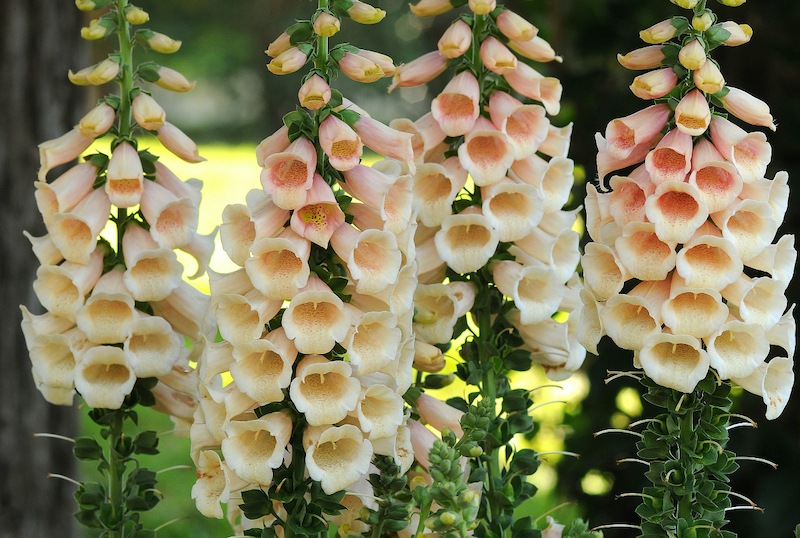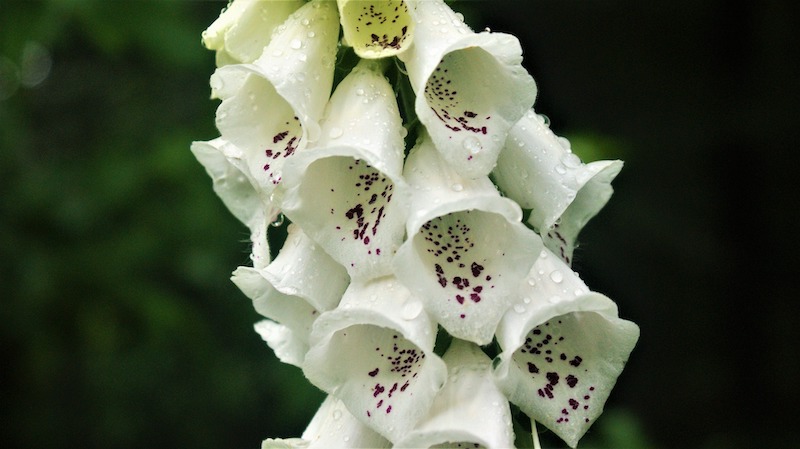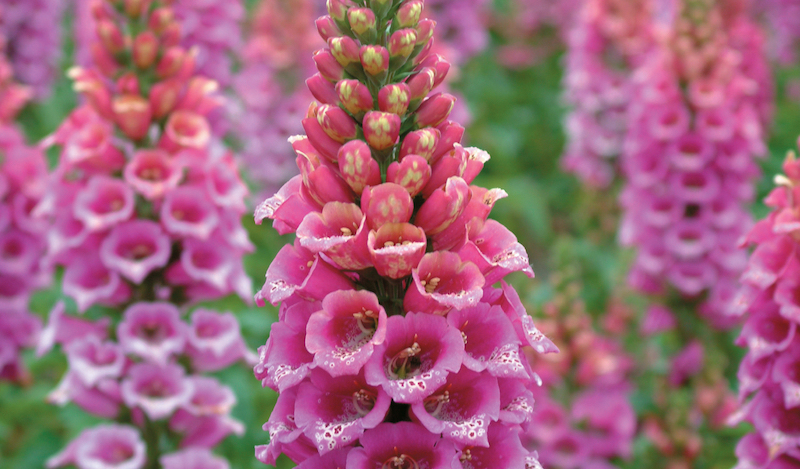Growing Foxglove
Grown for their tall inflorescences of brightly colored, bell-shaped flowers, Foxglove (Digitalis spp.) is an easy-to-grow perennial that adds a pop of color to garden beds and containers alike. Foxglove grows as a perennial in zones 4-10. Also called Goblin Gloves, Witches’ Gloves, and Dead Men’s Bells, Foxglove has the ability to grow up to 6 feet tall, depending on the variety. Foxglove flowers come in a variety of colors, ranging from soft pastels to shocking bright yellows, pinks, and purples. This hardy perennial is loved by hummingbirds, butterflies, and bees, making it a great addition to pollinator gardens.
To care for Foxglove, be sure to place it in a spot that gets plenty of bright light, protected from the hot afternoon sun in warmer regions, and keep the soil evenly moist. Keeping Foxglove happy and healthy will allow it to bloom for weeks.

It is important to note that Foxglove is a toxic plant that should be kept away from children and pets. When working with Foxglove, wear gloves and protective clothing, and wash your tools and clothing once you have finished. Because of its toxicity, however, deer and rabbits also tend to leave it alone, making Foxglove an ideal addition to woodland gardens.
Planting Foxglove
When choosing a site to plant Foxglove, lighting and soil quality are of the utmost importance. This perennial grows well in full sun to dappled shade, depending on the variety. Plant it in an area with afternoon shade in regions with hotter, drier summers. Foxglove is prone to crown rot when placed in soil that is soggy, so amend your soil as needed to provide ample drainage.
To plant, dig a hole that is twice the width and of equal depth as the root ball. Fill the hole with high-quality, well-draining soil, especially if your soil is heavy with clay. When planting in pots, be sure to choose a large container with adequate drainage. Foxglove can grow 1-3 feet wide and can be planted a foot or two apart to allow it plenty of room to grow.
Watering Foxglove
As a woodland plant, Foxglove is content in soil that is consistently moist but not soggy. This means that Foxglove may need regular watering, at least once or twice a week, through the hottest and driest months. Do not allow the roots to dry out completely, but avoid letting the roots sit in water too long. Amending your soil and providing drainage will help. To aid in water retention, add a few inches of mulch around the base of the plant.

Fertilizing Foxglove
Foxglove is not a heavy feeder and can usually grow quite well in rich soil alone. As with many flowering plants, it is important to avoid nitrogen-heavy fertilizers, as this may lead to increased leafy green growth at the expense of flower production. Foxglove may benefit from a slow-release pellet fertilizer in the early spring or a layer of organic compost around the root zone, especially if planted in poorer soil.
Pruning Foxglove
It is possible to encourage your Foxglove to bloom again by removing the center flower stalk once it has started to fade. If Foxglove flower heads are allowed to go to seed, they will drop seeds that will grow into seedlings the following year. Biennial Foxglove will only bloom in its second year, so consistent care and reseeding can allow for continued blooms for years to come.
To keep Foxglove looking neat and tidy, prune back any dead flower heads and yellowing leaves, allowing the leaves to grow through the rest of the summer and fall. After pruning Foxglove, clean your tools and clothing to avoid coming into contact with Foxglove’s toxins.

Caring For Foxglove in Pots
Because Foxglove needs good drainage, always plant it in pots with drainage holes. An all-purpose potting soil is fine for potted Foxglove. Depending on the variety, Foxglove can grow rather large. Plant Foxglove in a pot that is at least a few inches larger than its root ball to allow it room to grow. Foxglove planted in pots may need water more frequently than when it is planted in a garden bed. Allow only the top inch or two of soil to dry before watering deeply, until water comes out the bottom of the pot.
Winter Care For Foxglove
Once the flowers have faded, you can trim the spikes down to the base of the plant. Perennial Foxglove can be cut back in the fall. For biennial Foxgloves, allow a few of the flowers to go to seed and produce seedlings next year, which will bloom their second year.
To prevent pests from overwintering, remove dead leaves and debris from around the plant once it has gone dormant. Adding a layer of mulch around Foxglove can help protect its roots through the winter. If grown in a pot, move the pot to a protected unheated garage to prevent the roots from freezing.
 |
Author Lynn Gusman - Published 3-17-2023 |
